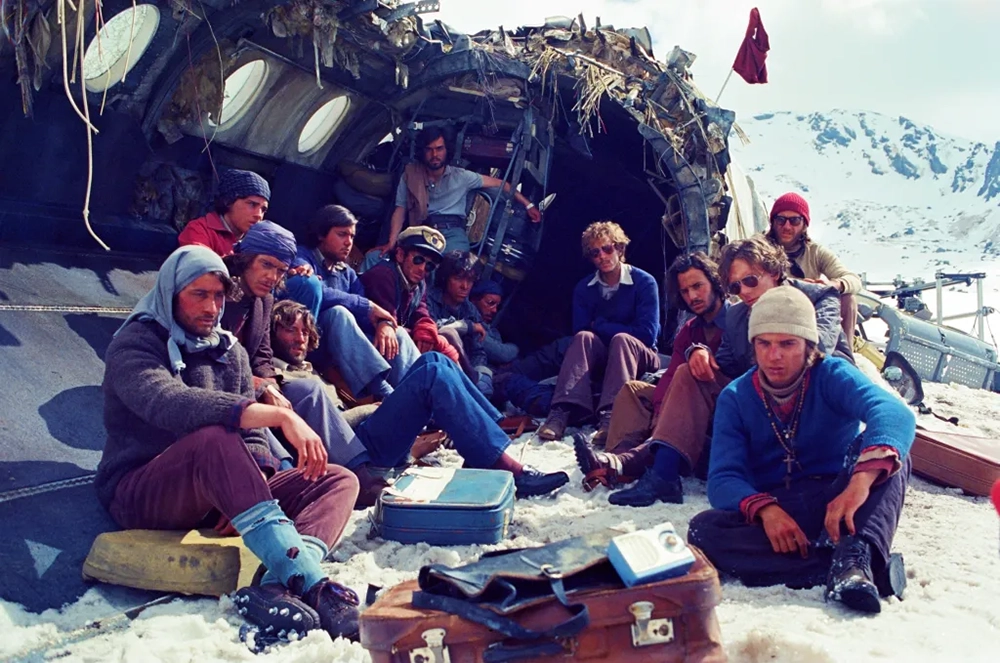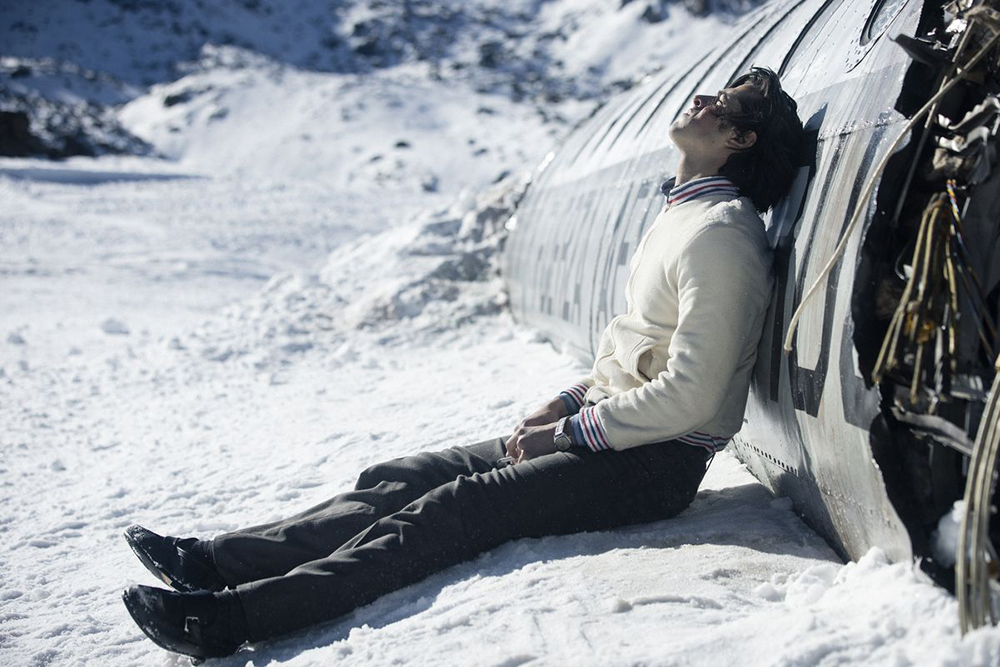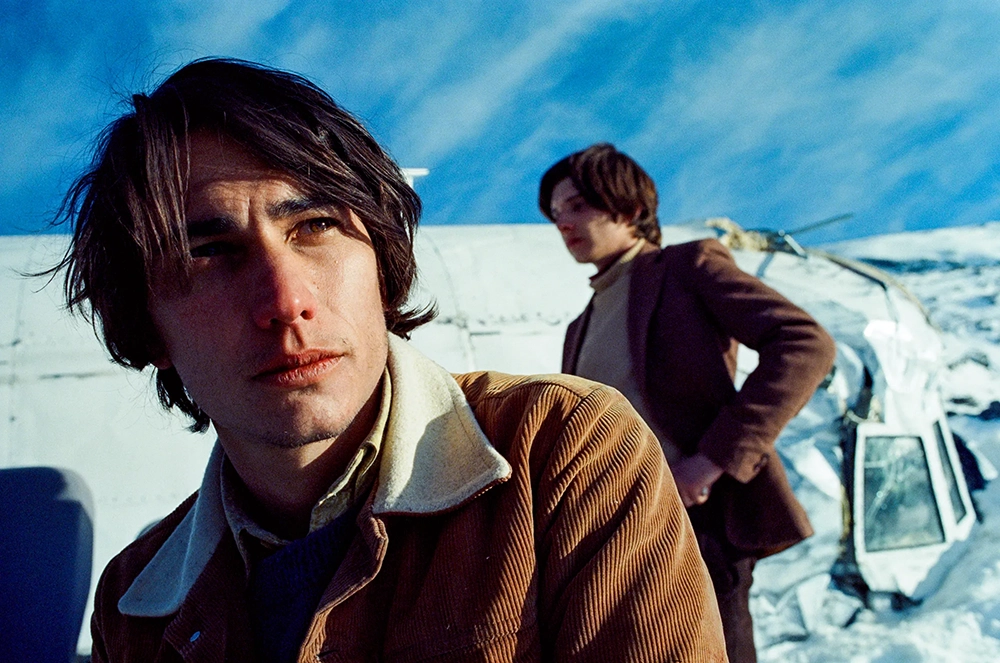“Society of the Snow” (directed by J. A. Bayona and written by J. A. Bayona, Bernat Vilaplana, and Jaime Marques) tells the true story of Uruguayan Flight 571, which crash landed on a glacier in the Andes in 1972, carrying the Uruguayan Rugby Team, along with some of their friends and family members. Surrounded by mountains, they struggle to survive long enough to be discovered by a passing plane or rescue team.
Here we are at the start of 2024, and I doubt there will be another film this year more gut-wrenching than this film. It starts out playfully enough, as we see the rugby team in action, including their star players Roberto Canessa (Matias Recalt) and Nando Parrado (Agustin Pardella); they are the team’s fastest runners and joke endlessly with each other. There are so many characters introduced in the first 15 minutes it’s pretty daunting.
Thankfully, the film eventually focuses on Numa Turcatti (Enzo Vogrincic Roldán, who looks like Adam Driver’s twin brother). Numa serves as the narrator, his voice-overs popping up periodically throughout the film. He’s the spiritual core of the group, supportive of everyone around him, even though internally he struggles with his own religious faith and purpose in life.
Selflessness amidst suffering
Aside from this, the film never goes into depth on any of the characters, focusing on the disaster and the daily struggle for survival instead. The one trait that stands out among all the characters, though, is their inspiring selflessness.
Normally in films like this, where a calamity happens, there’s going to be at least one person who puts themselves above everyone else, demanding more food, more clothes, more attention, etc… Not in this film. You never hear a single “That’s mine!” or “You can’t have that, I want it!;” but there are many times you’ll hear a character say “Let me help you,” or “Here, take half of my food, you need it.” It’s very poignant watching these people looking out for each other as they go through a seemingly endless cycle of suffering.

Speaking of suffering, the film never pulls any punches in showing the brutality of what the people on that flight went through. When the plane crashes, the seats on the plane slam together on impact like an accordion. It breaks arms and legs, squashing some people as if a massive slab of concrete fell on them, and deeply lacerates others, all of it shown in grisly slow motion.
Disaster strikes; and we feel all of it
The plane crashes at dusk, so as cold as it is at that moment, night soon falls and the temperature drops another 30 degrees. The survivors of the crash, some badly injured, wail and scream in pain as those who can still move desperately try to seal up what’s left of the plane to protect themselves from the elements. The film spends a lot of time on that first night, and you wonder how anyone could have made it through those first hours, sitting in complete darkness and oppressive sub-freezing temperatures.
And that’s only the beginning of the hardships the survivors have to go through. As the able-bodied try to figure out a way to signal for help, keep the badly injured alive and find food, Mother Nature keeps launching assaults on them. The film becomes a Russian Doll-type layering of distress, with one disaster after another coming down on them, each one worse than the last, and the film puts you front and center in each one. It allows you to feel every frigid, suffocating, bone-breaking, starving moment of it.
The film is a tough watch, but not because the movie is bad. Quite the opposite. It’s a tough watch because it grabs you and forces you to experience every moment of the anguish the survivors go through. I imagine only the most heartless person wouldn’t be affected by the film and feel for every one of the characters.
A captivating survival story

The scenery is magnificent thanks to the work of Cinematographer Pedro Luque. Those majestic mountains bathed in sunlight and the purist snow are awe-inspiring. Luque constantly finds a new angle to make those mountains look simultaneously gorgeous and malevolent.
Ultimately, the real power of the film isn’t all the trials the characters go through, it’s their ability to love and care for each other while remaining hopeful and finding joy in the quiet moments—all while in the absolute worst situation any human could be in. And that’s more beautiful than any pristine snow-capped mountain in the world.
“Society of the Snow” is currently available to watch on Netflix.



